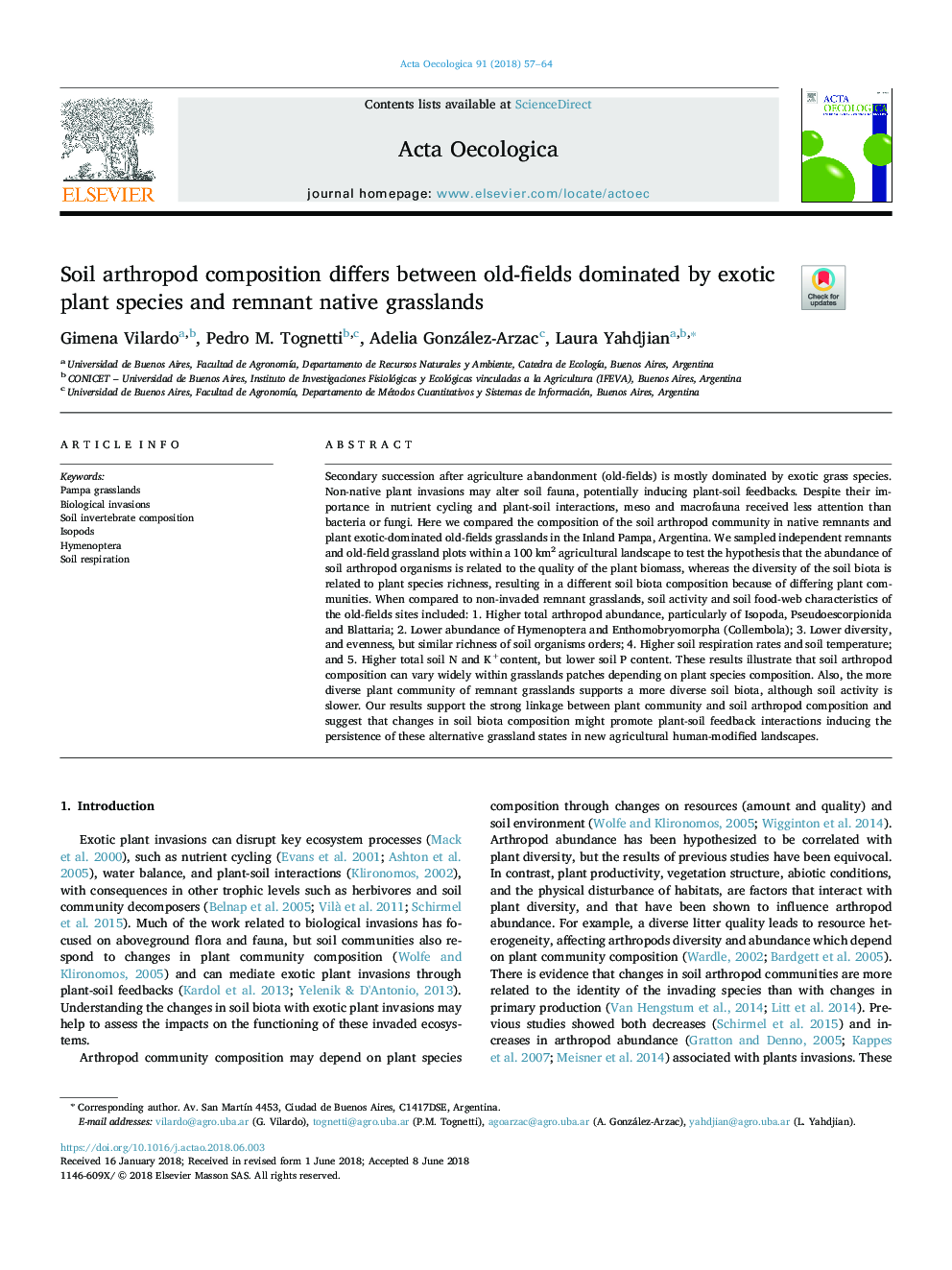| کد مقاله | کد نشریه | سال انتشار | مقاله انگلیسی | نسخه تمام متن |
|---|---|---|---|---|
| 8846452 | 1617681 | 2018 | 8 صفحه PDF | دانلود رایگان |
عنوان انگلیسی مقاله ISI
Soil arthropod composition differs between old-fields dominated by exotic plant species and remnant native grasslands
ترجمه فارسی عنوان
ترکیب مولکولی خاک بین زمینه های قدیمی غالب با گونه های گیاهی عجیب و غریب و مراتع بومی بقای آن متفاوت است
دانلود مقاله + سفارش ترجمه
دانلود مقاله ISI انگلیسی
رایگان برای ایرانیان
کلمات کلیدی
موضوعات مرتبط
علوم زیستی و بیوفناوری
علوم کشاورزی و بیولوژیک
بوم شناسی، تکامل، رفتار و سامانه شناسی
چکیده انگلیسی
Secondary succession after agriculture abandonment (old-fields) is mostly dominated by exotic grass species. Non-native plant invasions may alter soil fauna, potentially inducing plant-soil feedbacks. Despite their importance in nutrient cycling and plant-soil interactions, meso and macrofauna received less attention than bacteria or fungi. Here we compared the composition of the soil arthropod community in native remnants and plant exotic-dominated old-fields grasslands in the Inland Pampa, Argentina. We sampled independent remnants and old-field grassland plots within a 100â¯km2 agricultural landscape to test the hypothesis that the abundance of soil arthropod organisms is related to the quality of the plant biomass, whereas the diversity of the soil biota is related to plant species richness, resulting in a different soil biota composition because of differing plant communities. When compared to non-invaded remnant grasslands, soil activity and soil food-web characteristics of the old-fields sites included: 1. Higher total arthropod abundance, particularly of Isopoda, Pseudoescorpionida and Blattaria; 2. Lower abundance of Hymenoptera and Enthomobryomorpha (Collembola); 3. Lower diversity, and evenness, but similar richness of soil organisms orders; 4. Higher soil respiration rates and soil temperature; and 5. Higher total soil N and K+content, but lower soil P content. These results illustrate that soil arthropod composition can vary widely within grasslands patches depending on plant species composition. Also, the more diverse plant community of remnant grasslands supports a more diverse soil biota, although soil activity is slower. Our results support the strong linkage between plant community and soil arthropod composition and suggest that changes in soil biota composition might promote plant-soil feedback interactions inducing the persistence of these alternative grassland states in new agricultural human-modified landscapes.
ناشر
Database: Elsevier - ScienceDirect (ساینس دایرکت)
Journal: Acta Oecologica - Volume 91, August 2018, Pages 57-64
Journal: Acta Oecologica - Volume 91, August 2018, Pages 57-64
نویسندگان
Gimena Vilardo, Pedro M. Tognetti, Adelia González-Arzac, Laura Yahdjian,
